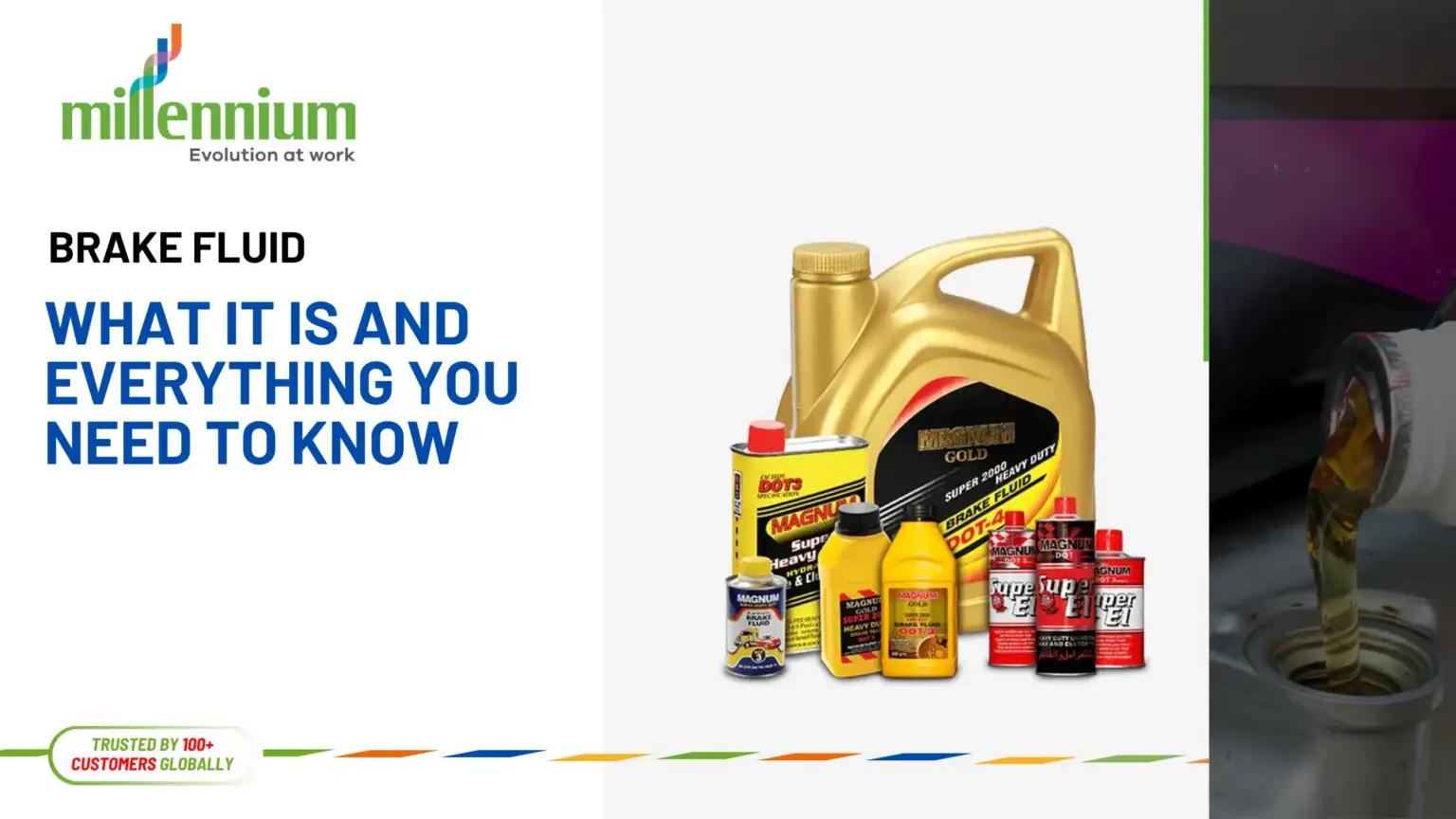Brake fluid is a critical component of your car’s braking system, ensuring your safety every time you drive. Despite its importance, it often goes unnoticed by many vehicle owners. This guide covers everything you need to know about brake fluid, from its purpose and functionality to the best options available in the market.
What is Brake Fluid?
Brake fluid is a hydraulic liquid used in a vehicle’s braking system. It transfers the force applied when you press the brake pedal into pressure, enabling the brake pads to slow or stop the wheels. Designed to function under high pressure and temperature, brake fluid is crucial for consistent and effective braking performance.
The Importance & Function of Brake Fluid
The role of brake fluid extends beyond basic functionality:
- Force Transmission: It converts mechanical force into hydraulic pressure, amplifying the braking force applied by the driver.
- Heat Resistance: Braking generates substantial heat; brake fluid must maintain its properties under extreme temperatures.
- Lubrication: It lubricates components within the braking system, reducing wear and tear.
- Corrosion Prevention: High-quality brake fluid contains additives to prevent corrosion in metal components, ensuring longevity.
How Does Brake Fluid Work?
When you press the brake pedal, the master cylinder pushes the brake fluid through the brake lines, generating hydraulic pressure. This pressure forces the calipers to squeeze the brake pads against the rotors, creating friction to slow the car.
The efficiency of this system depends on the condition of the brake fluid. Over time, exposure to air and moisture reduces its effectiveness, leading to potential brake failure.
Understanding Different Types of Brake Fluid
There are several types of brake fluids, classified based on their chemical composition and performance characteristics. Here are the main types:
- DOT 3:
- Glycol-based fluid.
- Suitable for most standard vehicles.
- Moderate boiling point.
- DOT 4:
- Higher boiling point than DOT 3.
- Commonly used in modern cars and light trucks.
- DOT 5:
- Silicone-based, non-hygroscopic (doesn’t absorb moisture).
- Used in vintage and high-performance vehicles.
- DOT 5.1:
- Glycol-based like DOT 3 and DOT 4 but with a higher boiling point.
- Ideal for heavy-duty and high-performance applications.
Key Consideration: Always refer to your vehicle manufacturer’s specifications when choosing brake fluid.
Top Brake Fluids in the Market
Here are some of the leading brake fluids trusted by professionals and car enthusiasts alike:
- Castrol SRF Racing Brake Fluid:
Known for its exceptional boiling point, making it ideal for high-performance vehicles. - Prestone DOT 3 Brake Fluid:
A reliable choice for everyday vehicles, offering excellent corrosion protection. - Motul DOT 5.1 Brake Fluid:
Designed for heavy-duty and high-performance applications, with superior moisture resistance. - Valvoline DOT 4 Synthetic Brake Fluid:
A versatile option for modern vehicles requiring DOT 4 standards. - ATE TYP 200:
Popular among racing enthusiasts for its long-lasting performance and high boiling point.
Why is Understanding Brake Fluid Important to Your Car?
Neglecting brake fluid can compromise your vehicle’s safety. Here’s why understanding it matters:
- Safety Assurance: Fresh brake fluid ensures optimal braking performance.
- Prevention of System Damage: Contaminated or old brake fluid can corrode brake components.
- Cost Savings: Regular maintenance prevents costly repairs to the braking system.
- Consistent Performance: Knowing the right type of brake fluid ensures your vehicle operates smoothly under all conditions.
Conclusion
Brake fluid is the lifeline of your vehicle’s braking system, translating your commands into action. Understanding different types of brake fluid, functionality, and maintenance is crucial for your safety and the longevity of your car. Regularly check and replace your brake fluid as per your vehicle manufacturer’s recommendations to ensure consistent performance. Remember, when it comes to braking, there’s no room for compromise.
